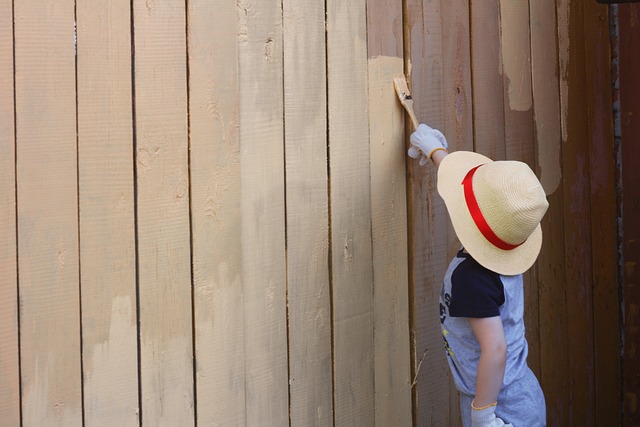Introducing the Art of Fence Staining and Sealing
A well-stained and sealed wooden fence not only enhances the aesthetic appeal of your outdoor space but also provides long-lasting protection. This comprehensive guide delves into the intricacies of fence staining, offering a step-by-step approach to transforming your wooden fence. From understanding the benefits of staining to choosing the perfect color, preparing your fence, mastering application techniques, and sealing for durability, this article equips you with all the knowledge needed to achieve professional results.
- Understanding Fence Staining Benefits
- Choosing the Right Stain for Your Fence
- Preparation: A Key to Successful Staining
- Application Techniques for Optimal Results
- Sealing: Protecting Your Stained Fence Long-Term
Understanding Fence Staining Benefits
Fence staining and sealing are essential steps in maintaining the health and aesthetics of your wooden fence. By understanding the benefits of this process, homeowners can make informed decisions about protecting their investments. Firstly, staining enhances the natural beauty of wood by adding colour and finish, which can transform an ordinary fence into a stunning feature of your landscape. It also provides a level of protection against elements like UV rays from the sun, rain, and extreme temperatures, preventing premature fading and peeling.
Moreover, sealing plays a crucial role in safeguarding the wood’s structural integrity. It creates a barrier to block out moisture, which is a primary cause of rot and decay. Regular staining and sealing can extend the lifespan of your fence, saving you from costly repairs or replacements. This process not only ensures your fence remains attractive but also maintains its strength and stability for years to come.
Choosing the Right Stain for Your Fence
Choosing the right stain is an essential step in fence staining and sealing. The first consideration is understanding your fence’s material and existing finish. Different woods, like cedar or pressure-treated lumber, absorb stains uniquely, so selecting a product designed for your specific wood type is crucial. Additionally, consider the desired color and level of transparency. Some stains offer rich, solid colors, while others provide a subtle, natural look with a hint of tint.
The age and condition of your fence also play a role in stain selection. If your fence is new, you might opt for a transparent or semi-transparent stain to protect the wood’s natural beauty. For older fences with varying color tones from weathering, a solid color stain can help even out the appearance and unify the look. Always read product labels and follow application guidelines for optimal results.
Preparation: A Key to Successful Staining
Preparation is paramount when it comes to successful fence staining and sealing. Before applying any stain or sealer, thoroughly clean the wooden fence to remove dirt, dust, mildew, and any existing paint or finishes. This process ensures that the new stain adheres properly and creates a smooth surface for application. Scrupulously brush or pressure wash the fence to eliminate any debris and allow it to dry completely. Inspect the wood for damaged areas, such as rot or cracks, and repair them accordingly. Filling these defects with a suitable wood filler or repair compound ensures an even stain application and long-lasting protection.
Application Techniques for Optimal Results
For optimal fence staining and sealing results, understanding application techniques is key. Begin by preparing the wood surface thoroughly; this includes cleaning away any dirt, debris, or old finish with a pressure washer or brush. Sanding the fence slightly can also help the new stain penetrate better.
Choose the right tools for application—a good quality brush or roller, depending on your fence’s size and shape. For smaller areas, brushes allow for detailed work and control over color application. Rollers are more suitable for larger fences as they cover a wider area with each pass. Ensure even coverage by overlapping strokes and maintaining consistent pressure to avoid streaks or uneven finishes.
Sealing: Protecting Your Stained Fence Long-Term
Sealing your wooden fence after staining is a crucial step to ensure its longevity and maintain its vibrant, new appearance. The primary purpose of sealing is to create a protective barrier between the wood and the elements—sunlight, rain, and humidity—which can cause the stain to fade or the wood to rot over time. A good seal not only preserves the color but also shields the fence from UV rays that can dry out and weaken the wood.
Choosing the right sealant is key. Water-based sealants are popular for their low odor and environmental friendliness, while oil-based options offer superior durability. Apply the sealant with a brush or roller, following the manufacturer’s instructions for drying times. Regular reapplication, typically every 1-3 years, depending on factors like exposure to sunlight, will keep your fence looking its best.
